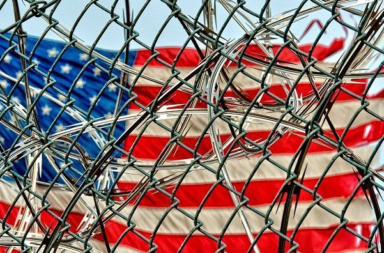In April of 2016 the Obama Administration announced the most ambitious clemency program in decades:
- The project was meant to be a legacy-defining accomplishment for the nation’s first black president and was meant to release 10,000 convicted drug offenders and other convicts from their sentences.
- Now, the project has largely been regarded as a failure.
- Two years later thousands of cases have piled up and left the prisoners who petitioned for early release in the dark about their futures.
The Clemency Project
Heading into the last two years of his presidency, Obama took on one of the most controversial projects during his presidential career. To date, hundreds of thousands of prisoners in the US penal system have been arrested during the War on Drugs of the late 1980s and 90s.
It has been a legacy that has left deep scars in the African-American and Hispanic communities and has been the subject of prison reform policy for decades. The policies from that era have done more to add to the obscene number of convicted felons in the nation’s history.
In the context of the way that the War on Drugs has ravaged minority communities the story of Eugene Haywood rings uncomfortably rue and familiar.
Haywood was sentenced as a teenager for drug offenses. He was arrested twice to short prison sentences when he 25 and then again on a third charge of possession of cocaine. Because it was the third time the infamous Three Strikes Rule was invoked. Similar to the way that getting three strikes works in the game of baseball, if a person was convicted three times they were to be sentenced to life in prison without the possibility of parole.
For comparison: An armed bank robbery is punishable in the United States with a maximum of 25 years in prison.
Obama’s Fall From Grace
The president’s administration first announced these plans as an effort to reverse the effects of the excesses of the war on drugs. The 2010 Fair Sentencing Act passed under his administration to reduce the disparities between those offenders caught with crack and those caught with cocaine (a highly racialized issue—with more white cocaine dealers receiving lighter sentences while blacks dealing crack were often given far harsher sentences).
To date Obama has commuted the sentences of 248 prisoners—that’s more than the last 7 presidents combined—but it falls far below the thousands of prisoners that the administration once promised.
Critics of the president’s program point out that the 70 pardons that he has issued have been the lowest of any presidential administration since John Adams in 1801.
Bad Policy Formation
The Clemency Project started out with all of the best intentions. However, due to bad policy formation the pro-bono lawyers who volunteered to help with the project are straining under the weight of the sheer number of applications. This has resulted severe problems with wading through the massive number of requests to feed the best cases to the Department of Justice (DOJ) for processing.
The original plans for the project called for lawyers and law students around the country to lend support in taking on the cases of offenders. Lawyers involved with the project have told Reuters that more than 8,000 of the 44,000 cases that were submitted have yet to make it to the Department of Justice (DOJ) for review. This is in addition to the more than 9,000 cases that are still pending at the DOJ according to the department’s official estimates.
It seems that the Obama administration had vastly overestimated the number of lawyers that they would have signup to help while simultaneously setting unrealistic expectations for how much those lawyers would ultimately be able to do.
The DOJ says that the lawyers’ group has only handed over 200 cases.
The lawyers say that the DOJ is vastly underprepared and understaffed to handle a higher volume of cases.
Far more likely, it is some confluence of a large number of unqualified cases, an overworked volunteer group, and a chronically understaffed federal agency straining under the weight of incredibly complex cases.
Either way, the fault ultimately lies with the Obama administration for failing to consider and to plan appropriately for the slow processing times.
Harsh Truths and Broken Dreams
Whatever the problems with the program itself—the effects of the bungled effort have been disheartening for many inmates who have applied.
One example of this is Josie Ledezma.
Ledezma was sentenced to life for conspiracy to transport cocaine. She applied for clemency through Clemency Project 2014. She said that it took six months for her to hear from the Clemency Project, only to learn several months later that her assigned lawyer had shut down her legal practice.
Nearly, one year after applying Ledezma was told Clemency Project 2014 could not help her and encouraged her to apply directly to the federal government to appeal her claim.
“I wrote back and asked what was it that made me not qualify, but never got a response,” Ledezma told Reuters through the messaging system.
Unfortunately, Ledezma’s story is all too common for many of the nation’s prisoners who applied to the program.
So now, while the administration sorts through the mess of a bad set of policies, thousands of prisoners are still waiting and hoping for their one shot at freedom.




